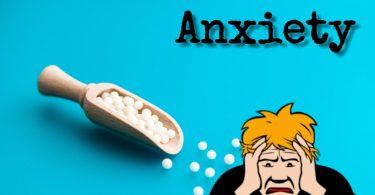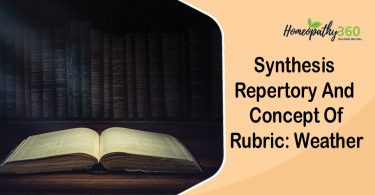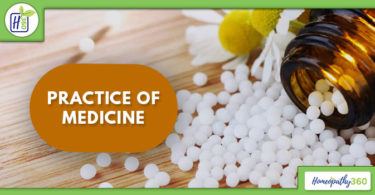
ABSTRACT:
High blood pressure, also known as hypertension, affects millions — including children and teens. Learn about causes, symptoms, diagnosis, treatment and prevention, and discover natural ways to manage your blood pressure and stay well. The exact cause of hypertension is unknown, but there are several factors and conditions that may contribute to its occurrence. Lifestyle adjustments are the standard, first-line treatment for hypertension.
INTRODUCTION:
Hypertension also known as high blood pressure. It is a long term medical condition in which the blood pressure in the arteries is elevated. Blood pressure is determined both by the amount of blood your heart pumps and the amount of resistance to blood flow in your arteries. You can have high blood pressure (hypertension) for years without any symptoms. High blood pressure generally develops over many years, and it affects nearly everyone eventually. Nearly one-third of people who have hypertension may not be aware of it. This is the most dangerous aspect of Hypertension. Hypertension is called a “silent killer”. Hypertension is a major cause of premature death worldwide1.
Systolic Blood pressure represents the pressure in blood vessels when the heart contracts or beats. The Diastolic Blood pressure represents the pressure in the vessels when the heart rests between beats.
RISK FACTORS:
There are some risk factors of Hypertensions are drinking too much alcohol, smoking, and family history. Unhealthy diets like salt consumption, a diet high in saturated fat and trans fats, low intake of fruits and vegetables, sedentary life, Physical inactivity and being overweight or obese.
CLASSIFICATION1:
Hypertension can be classified as Primary (essential) hypertension or Secondary hypertension1. Primary is due to nonspecific lifestyle, environmental factor and genetic factors. Secondary is due to identifiable causes, such as chronic kidney disease, narrowing of the kidney arteries, an endocrine disorder, or use of birth control pills. Primary is about 90 to 95%, and secondary is about 5to 10%.
| Classification – British Hypertension Society | ||
| Category | Systolic Blood Pressure (mmHg) | Diastolic Blood Pressure (mmHg) |
| Blood Pressure | ||
| Optimal | <120 | <80 |
| Normal | 120-129 | <80-84 |
| High Normal | 30-139 | 85-89 |
| Hypertension | ||
| Grade 1 ( mild ) | 40-149 | 90 |
| Grade 2 ( moderate ) | 160-179 | 100-109 |
| Grade 3 ( Severe ) | >180 | >110 |
| Isolated Systolic Hypertension | ||
| Grade 1 | 140-149 | <90 |
| Grade 2 | >160 | <90 |
Symptoms include early morning headaches, vertigo, buzzing in the ears, nosebleeds, vision changes, irregular heart rhythms, confusion, anxiety, chest pain, fatigue, nausea, vomiting, and muscle tremors1.
COMPLICATIONS
Circulatory system- Atherosclerosi, Aneurysm, Aortic Dissections
Chronic Kidney Disease -Haematuria, Ureamia, Proteinuria
Cardiac Failure- Pulmonary oedema, Myocardial Infarction, Left Ventricular Hypertrophy
Stroke- Haemorrhage, Infarction, Seizures, Vascular Dementia
Blindness- Haemorrhage, Exudate, AV Nipping, Papilloedema.
INVESTIGATIONS –All patients2
Blood Urea, electrolyte glucose and creatine
Urine for blood, protein, glucose
Lipid profile
ECG
Investigations – Selected
Chest X-Ray: Cardiomegaly, Heart Failure, Coarctation of aorta
Echocardiogram : Left ventricular failure
Renal Ultrasound: Renal disease
Renal Angiography : Renal artery stenosis
Urinary Catecholamines : Phaeochromocytoma
Urinary Cortisol and dexamethasone : Cushing’s Syndrome
Plasma Renin Angiotensin : Primary Aldosteronism
PREVENTION2
Reducing salt intake (below 5g daily)
Increase dietary Potassium
Eating more fruits and vegetables
Avoiding use of tobacco
Avoiding use of Alcohol
Avoid trans fats in diet
Regular Physical exercise
Limit the intake of high saturated fat
Approach to newly diagnosed Hypertension3
Detail History
Examination
Investigations
To obtain accurate and representivemeasurements of blood pressure
To identify contributory factors and any underlyimg cause
To assess other risk factors and quantify cardiovascular risk
To detect any complications that are already present
HOMOEOPATHIC APPROACH:
Hahnemann conclude by saying causation of disease through different stages of disease, first should have definite idea about nature of disease. By hitting the fundamental cause of chronic disease he could formulate that the major portion of dynamic disease are of miasmatic nature4. ILLNESS OCCUR IN 3 DIFFERENT CIRCUMSTANCES
- An external invading factor with overwhelmingly increased strength, or virulence may unconditionally override the body’s resistance.
- One or several of the specific resistance factors is weakened somehow thereby allowing for the invasion of the corresponding outer infective agent.
- Any function of system, of itself may be altered in such a way to become similar instead of opposed to any of the outer extra human process, thus it spontaneously would create an enslave, as it were of an extra human inimical functioning, endogenous factor, thus the susceptibility over rides all other considerations.
Emotionalstress:
This affects the production of
chemical changes in the body leading to hypertension. The tension produced can
lead to many varied emotions. Body produces a surge of hormones when you’re in a stressful situation. These
hormones temporarily increase your blood pressure by causing your heart to beat
faster and your blood vessels to narrow. There’s no proof that stress by itself causes long-term high
blood pressure5. But reacting to stress in
unhealthy ways can increase your risk of high blood pressure, heart attacks and strokes5. Exercising three to five times a week for 30 minutes can reduce
your stress level. And if you have high blood pressure, doing activities that
can help manage your stress and improve your health can make a long-term
difference in lowering your blood pressure.
Homeopathic medicines:
- Agitation may need Arsenicum album
- Fear may need Aconite
- Anxiety may need Gelsemium
- Anger may need Nux vomica
- Resentment may need Staphysagria
- Grief may need Ignatia
- Black depression
may need Aurum metallicum6
- Argentum nitricum: If blood pressure rises with anxiety and nervousness, Argentum Nitricum is indicated. “Stage fright” or anticipation of a stressful event can bring on dizziness, headache, diarrhea, and a pounding pulse. People who need this remedy are typically warm-blooded, iaginative, impulsive, claustrophobic, and have cravings for sweets and salt6.
- Calcarea Carbonica: This is one of the important remedy helpful to people with high blood pressure who easily tire and have poor stamina. They are typically responsible types who feel overwhelmed when ill and fear a breakdown. Palpitations and breathing problems can be worse from walking up a slope or stairs, and also when lying down. A general chilliness with clammy hands and feet (the feet may heat up in bed at night) and sweat on the head during sleep are other indicators. The person may have cravings for sweets and eggs, and tend toward weight problems7.
- Glonoinum: In Glonion the main important feature is flushed face with a pounding headache and visible throbbing in the blood vessels of the neck may indicate a need for this remedy. The chest can feel congested or hot, with a pounding or irregular heartbeat. The person is worse after moving around, heat and sun exposure, and drinking alcohol. A feeling of “being lost in a familiar place” is a strong indicator for this remedy.
- Natrum muriaticum: A person who needs this remedy seems reserved and responsible, but may have strong feelings (of grief, disappointment, anger, grudges, a fear of misfortune) inside. Headaches and palpitations are common, as well as a feeling of tension (even coldness) in the chest. The person feels worse after sun exposure, worse around mid-morning, and better when alone in a quiet place. Craving for salt is the important feature of Natrum Mur and strong thirst can help to confirm the choice8.
- Phosphorus: Phosphorus patient is usually sensitive, suggestible, and sympathetic, with a tendency toward weakness, dizziness, a “spaced-out” feeling, and fearfulness. Nosebleeds, facial flushing, palpitations, feelings of heaviness or pain in the chest, and left-sided problems are often seen. A strong desire for cold drinks and refreshing things, and a marked improvement after eating and sleeping are other indicators for Phosphorus8.
- Veratrum viride: Paroxysms of auricular fibrillation. Induces fall of both systolic and diastolic blood pressure. Bloated and livid face. Beating of pulses throughout body, more in right thigh. Constant, dull, burning pain in region of heart. Congestion of face and apoplectic. Convulsive twitching of facial muscles.
- Viscum album: In this the person feels as if whole vault of skull were lifted up. There will be double vision and buzzing and stopped-up feeling in ear. Also there is facial muscles in constant agitation. Pulse will be small and weak; unable to rest in a reclining position. Persistent vertigo and giddiness along with intense throbbing headache. Sharp pain in head and face, leaving them sore and numb feeling in head. Blue ring around the eyes9.
- Rauwolfia Serpentina is a safe and effective treatment for hypertension. Carbophosphoric type with nervous and sanguine temperament. Lack of tone in nerves and circulatory system, congestive vascular conditions, insomnia after midnight. High blood pressure without marked atheromatous changes in the vessels9.
- Baryta Muriatica: This is one of the deep acting remedy in Homoeopathy. In this remedy the physical anxiety is more marked. There is palpitation, dyspnoea and weakness which is more on ascending stairs. All the complaints are more marked on left side, and worse on sitting. Patient feels comfortable on lying down but the complaints comes during sleep. Dread of bathing and worse while standing. Frequent fainting spells can be seen in this along with the convulsive tendency9.
CONCLUSION:
Blood Pressure is the force that a person’s blood exerts against the lateral walls of their blood vessels. This pressure depends on the resistance of the blood vessels and how hard the heart has to work. There are so many risk factors for Hypertension. If we are able to identify these risk factors then we can avoid complications like cardiovascular disease, including stroke, heart attack, heart failure, and aneurysm. Keeping blood pressure under control is vital for preserving health and reducing the risk of these dangerous conditions. Complication can be controlled by regular check-up and proper medication.
REFERENCES:
- Davidson’s Principles & Practice of Medicine (Book 21); Paperback: 1376 pages; Publisher: Churchill Livingstone; 21 edition (March 25, 2010)
- Harrison’s Principles of Internal Medicine, 20th Edition Vol-I & II, New York: McGraw Hill Education, 2018.
- Wilkisons. Ian B. , Oxford handbook of Clinical medicine- Mini edition, Flexibound: 904 pages; Publisher: Oxford University Press;
- Hahnemann Samuel, Boericke MD William, Organon of Medicine: Delhi, B Jain Publishers (P) LTD; 1994.
- Your reaction to stress may affect your blood pressure Available from: URL of part https://www.mayoclinic.org/diseases-conditions/high-blood-pressure/in-depth/stress-and-high-blood-pressure/art-20044190
- Boericke William, M.D, Pocket manual of Homoeopathic Materia Medica and Repertory and a chapter on Rare and Uncommon Remedies: Delhi Jain Publishers PVT Ltd, 1991.
- Nash E.Leaders In Homoeopathic Therapeutics, Presented by Médi-T, Publisher: B Jain Pub Pvt Ltd (1 August 2013).
- Kent JT. Lectures on Homœopathic Materia Medica. New Delhi: B. Jain Publishers Pvt. Ltd; 2012.
- Clarke Henry John MD, Clarke a Dictionary of Practical Materia Medica. vol- I, II & III Delhi
B Jain Publishers (P) Ltd; 1995.
About Author:
Dr. Mini I V
Associate Professor in Dept. of Materia Medica
Father Muller Homoeopathic Medical College
Mangalore,





